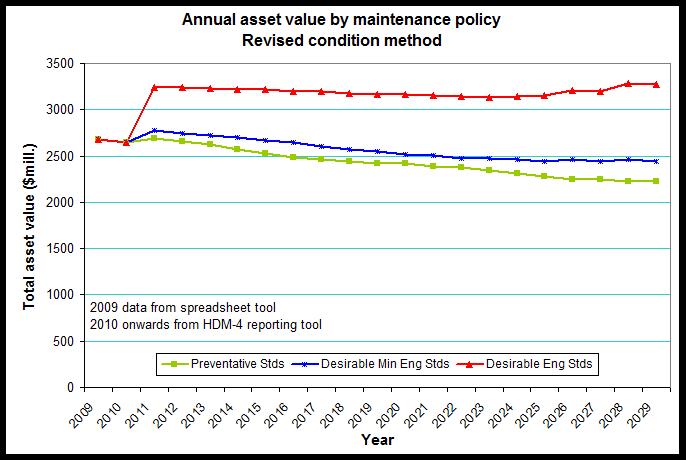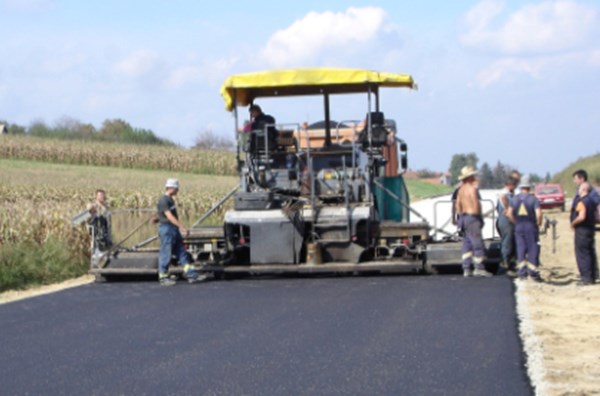Build and manage better road networks
- Home
- HDM-4 Version 2
- HDM-4 In Use
- Tasmania
Tasmania
Adaptation of HDM-4 for Tasmania
Submitted by Norbert Michel, ARRB
Developing and maintaining a quantitative and defendable basis for estimating maintenance and rehabilitation needs was identified as a key priority for the Tasmania government and road users. For this purpose, trials were initiated in 2003 to implement and adapt the PIARC owned and supported HDM-4 road investment and maintenance planning tool.
ARRB was engaged by the Tasmanian Department of Infrastructure, Energy and Resources (DIER) to provide continuous support in achieving this goal through eight phases of support. The support has taken place between 2003 and 2011 and is ongoing.
In keeping with good practice principles for the implementation of any software system within any organisation, ARRB and DIER have worked collaboratively to ensure the gradual development of the capability and hence sophistication of the application to address the departments’ needs. The work programs have built upon one another to ensure incremental improvement and improved application of the tool to assist with long term strategic planning of the Tasmanian road network. Each phase of the support resulted in a comprehensive report and outlined recommendations for the departments’ consideration. The scope of each of these phases included:
- Initial configuration of HDM-4, calibration of road deterioration and works effects models and trial strategic pavement analysis using a limited network
- Full strategic analysis for the State road network and draft applications framework
- Improved surfacing performance predictions and treatment strategies and works effects models
- Provisional specification for (HDM-4 related) asset management tools
- Migration of HDM-4 V1.3 to HDM-4 V2.0
- Development of a sustainable maintenance funding process plan, updating of the HDM-4 configuration and an asset valuation review
- Preparation of a sustainable maintenance plan covering a wider range of pavement management considerations, including impacts on asset valuation, and an initial review of pavement life data and proposals for in-depth study
- Final asset valuation process and associated tool, pavement life and intervention criteria, a final fully operational DIER workspace for HDM-4 (Version 2) and tuition in its application.
Extensive support and application of the HDM-4 technology across Australia over a number of years facilitated the adaptation of the road deterioration, works effects and vehicle operating cost models to Australian conditions. This previous investment through Austroads research therefore assisted the department in selecting HDM-4 as their ‘best of breed’ tool of choice to manage their network. It also presented a defendable basis for estimating its long term strategic funding needs and assisting in the prioritisation of candidate sites to address further deterioration of the identified segments and immediate safety issues.
As part of the initial phases, HDM-4 was adapted for local conditions, with particular emphasis and care being taken to ensure that the many factors which influence road performance and vehicle fleet performance and consequently funding needs. This required consideration of and supply of data covering pavement history and construction type, layer types, thicknesses and properties, drainage and geometric characteristics, and age and condition of the road.
As part of natural progression of each phase building on the last, the facilities to exploit HDM-4 for other analyses, including the economic and technical evaluation of capital projects, were embraced and assisted the department to further refine their treatment selection rules and hence better quantify the network needs to address the significant backlog of works that are required to maintain present asset values (Toole et al. 2008). Naturally, other functionality for asset valuation which is performed each year by the Department to meet State accounting requirements, and other analysis capabilities have become heavily used features of HDM-4.
Finally, whilst the focus of the support over the last eight (8) years was primarily associated with the HDM-4 suite of software and associated models, in practice the team’s charter was to harness local experience to realise significant contributions to maintenance planning. Consequently, since the use of the tool was predominantly evidence-based working in conjunction with DIER’s business rules, the basic analytical framework and set up can now be adapted and applied within other tools in future should the Department choose such a path. The focus, for any other such implementation and adaptation project, therefore needs to be on the technical contents and functionality of a tool, rather than the specific software itself.
References:
Toole T, Michel N, Walker b and I Booth (2006), Long term performance estimates of treatment strategies in Tasmania, 22nd ARRB Conference – Research into Practice, Canberra, Australia
Roper R, Michel N and G Nichols (2008), Development of a sustainable maintenance funding process for DIER Tasmania, 23rd ARRB Conference – Research Partnering with Practitioners, Adelaide Australia.
Download the authors reports
-
Find out about the technical support service offered by HDMGlobal to help users use HDM-4 effectively.
-
For existing HDM-4 users, view the latest software release and the changes made before registering to receive the updates.
-
Find out about HDM-4 training courses offered by HDMGlobal and their partner organisations and other related events.











